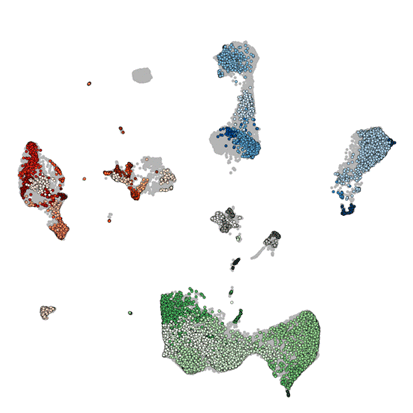The new Ageing Cluster: Transforming our approach to understanding ageing

Ageing is a complex biological process with a wide array of impacts on our bodies, whether in healthy ageing or in development of age-related diseases. Age-related illnesses are one of the most challenging disease areas we face, with remarkable increases in the size of the older population projected over the next few decades. As the number of people likely to be living with diseases such as dementia, cancer and heart disease will increase, it is crucial that we improve our understanding of the molecular and cellular determinants of healthy ageing. The new National Mouse Genetics Network Ageing Cluster aims to improve existing models of ageing to provide a resource for development of interventional strategies that improve quality of life in later years.
The new Cluster is co-led by Walid Khaled at the University of Cambridge and Laura Greaves at Newcastle University. Walid’s team is interested in understanding the early steps of tumour initiation and how ageing and tissue resilience impact this process. His team became one of the first to use single-cell RNA sequencing to identify changes in the normal and preneoplastic mouse and human mammary gland, and he co-leads the Human Breast Cell Atlas Initiative. Laura, who is also a member of the Mitochondria Cluster, is focused on understanding how age-related changes in mitochondrial metabolism contribute to ageing and age-related disease. Her group are particularly interested in how these changes have a role in colorectal cancer.
With ageing impacting so many systems, it was important that Walid and Laura surrounded themselves with Cluster members with expertise across a wide range of ageing-associated issues. Dervis Salih, at the UK Dementia Research Institute at UCL, explores how common genetic variation in the human population drives immune cell interactions and neuroinflammation related to the ageing brain, and age-dependent neurodegeneration, such as Alzheimer’s disease. Michelle Linterman, at the Babraham Institute, is studying how different cell types collaborate in the germinal centre to generate a robust antibody response following vaccination and infection across the lifespan.
Karen Suetterlin, also at Newcastle University, leverages age-related phenotype changes in monogenic diseases to gain insights into disease physiology and healthy ageing, with a particular interest in neuromuscular disease and skeletal muscle physiology. Masashi Narita’s group at the Cancer Research UK Cambridge Institute focuses on the cellular stress response with particular emphasis on cellular senescence, the functions of senescent cells, and how they impact on immune response and tumorigenesis.

The aim of the Ageing Cluster is to construct a time-resolved high-resolution map of age-associated phenotypic, cellular, and molecular changes in the mouse. Building such a multi-omic map that captures so many different types of data and combines it with phenotypic data from mice is an enormous undertaking and will require a different kind of technical expertise. Nicholas Schaum, also at the University of Cambridge, works on the creation of large-scale, state-of-the-art datasets for use by the research community. Previous projects include Tabula Muris Senis, the first organism-wide single-cell resolution ageing atlas, and Rejuvenome, a multi-omic and longitudinal phenotypic atlas of ageing interventions in mice.
Similarly, technical expertise is required in the capture and interpretation of transcriptional, epigenetic, and protein changes. Anne Ferguson-Smith, also at the University of Cambridge, is an expert on genomic imprinting and her team studies the epigenetic control of genome function with particular emphasis on epigenetic inheritance. In addition, although the support of the Mary Lyon Centre — as the hub of the Network — will be of great importance to the development of a minimally invasive physiological phenotyping platform that quantifies the deterioration of biological function across the life course in mice, many of the Cluster’s members already have extensive experience of combining and comparing work done in mice with human studies.
Preventing age-related disease with new scientific data and approaches is an achievable goal that would circumvent the financial and personal toll of an unhealthy population. The Ageing Cluster’s approach will enable us to identify conserved and potentially modifiable modulators of healthy lifespan. This will highlight the translational opportunities that could be revealed by studying ageing in the mouse.
Professor Patrick Chinnery, Executive Chair of the Medical Research Council (MRC), said:
“The MRC National Mouse Genetics Network Ageing Cluster will transform our approach to understanding ageing and how to promote a healthy lifespan. This is only possible through a cross-disciplinary collaboration across the UK.’